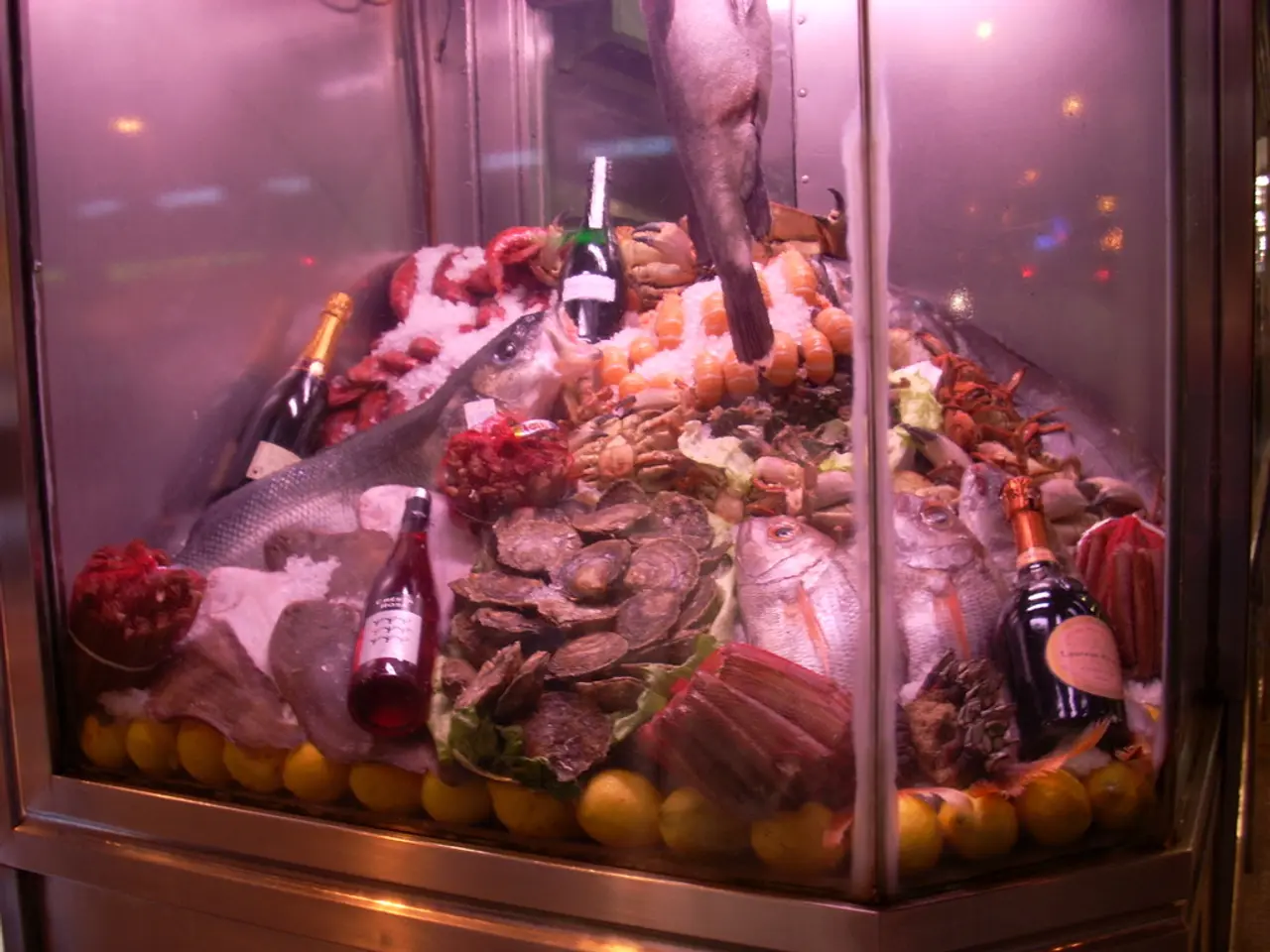Norway Alters Historical Narrative and Potentially Saves Earth: Transforming Carbon Dioxide into Edible Goods
In a groundbreaking development, a Norwegian company named TruScience is converting carbon dioxide, a major contributor to global warming, into a valuable resource for salmon farming. This innovative project, carried out at Finnfjord AS, a metallurgical plant, is transforming 300,000 tons of carbon dioxide per year into food.
The process involves feeding diatoms, a type of microalgae rich in healthy fats, with carbon dioxide. These microalgae synthesize omega-3 fatty acids, addressing a major challenge in aquaculture. The diatoms are then added to the food for salmon.
Extensive testing has shown that the food derived from carbon dioxide is reliable for salmon. The tests cover the entire life cycle of the fish, from fry to commercial size, and the results are consistent. Salmon fed with these microalgae have shown much better results, making this innovation a significant step forward in sustainable salmon production.
This project serves as a model of a circular economy, where carbon dioxide is transformed from a problem into a resource. It also demonstrates the potential for transforming polluting products into resources, contributing to the reduction of carbon emissions.
In addition to its environmental benefits, this innovation also offers economic advantages. Local production of microalgae reduces the need for imported raw materials, decreasing the environmental impact of transportation. Furthermore, a reduction in salmon lice infestation has been observed with the use of algae-enriched foods, a significant environmental and economic benefit.
Norway is not stopping at this innovation. The country plans to experiment with harvesting energy from the sea to further enhance the sustainability of this project. This climate and season-independent innovation enables industrial scaling and stable production, paving the way for a more sustainable future for salmon farming.
In a world where reducing carbon emissions is a top priority, this innovation in Norway offers a promising solution. By transforming a polluting gas into a product, it significantly reduces the carbon footprint of salmon production. This approach could potentially be replicated in other industries, making it a significant stride towards a more sustainable future.
Read also:
- Peptide YY (PYY): Exploring its Role in Appetite Suppression, Intestinal Health, and Cognitive Links
- Toddler Health: Rotavirus Signs, Origins, and Potential Complications
- Digestive issues and heart discomfort: Root causes and associated health conditions
- House Infernos: Deadly Hazards Surpassing the Flames








